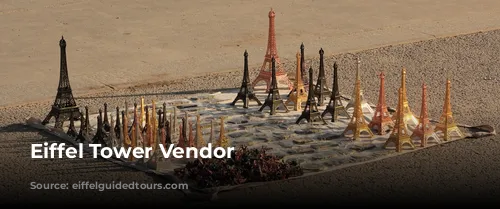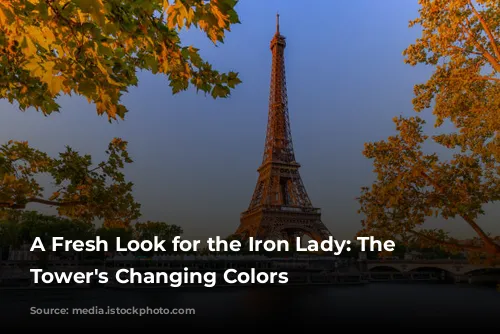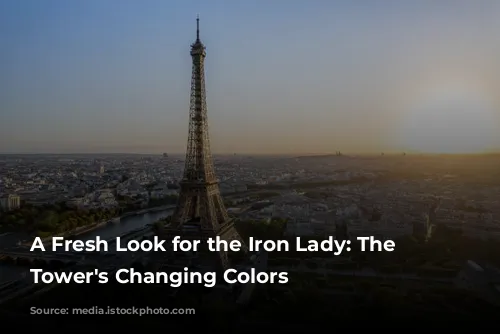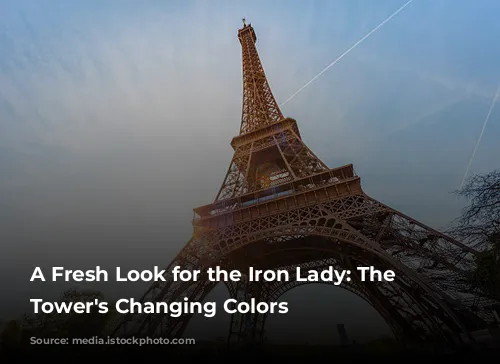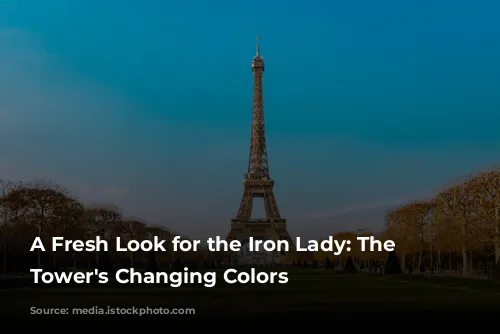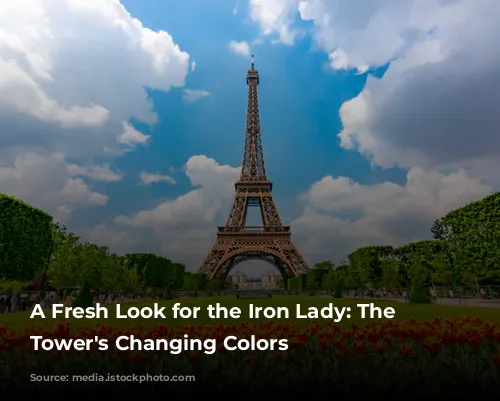The Eiffel Tower, a beloved Parisian landmark, is getting a fresh coat of paint! For the first time in 53 years, the tower is returning to its original color, a “yellow brown” chosen by its creator, Gustave Eiffel himself. This exciting makeover will be complete in time for the 2024 Summer Olympics in Paris, ensuring the city’s iconic symbol shines brightly during this global event.

More Than Just a Paint Job: A History of Hues
The Eiffel Tower’s transformation isn’t just about aesthetics; it’s a journey through time, reflected in its changing colors. The tower has donned different shades over the years, each era leaving its mark. It all started with a “Venetian red” during its construction, transitioning to a “red brown” for the 1889 World’s Fair. In 1899, the tower was adorned with five distinct tones of yellow, a yellow-orange base gradually fading to a light yellow at the top.
Then, in 1907, Gustave Eiffel requested a “yellow brown” to grace his creation, a hue it proudly wore for over four decades. In 1968, the iconic “Eiffel Tower brown” was born, a shade chosen for its harmonious blend with the Parisian cityscape and eventually becoming a trademarked color. And now, as we stand on the brink of the 2024 Olympics, the tower embraces its “yellow brown” heritage once again.
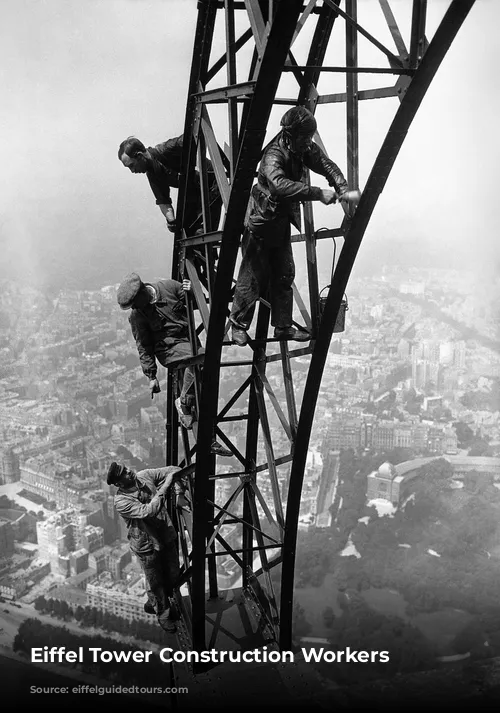
A Monumental Makeover: The Art of Repainting the Eiffel Tower
This monumental repainting project isn’t just about applying a new coat of paint. It’s a complex and meticulous process, demanding expertise, patience, and a dedication to preserving this Parisian treasure. Every seven years, the Eiffel Tower undergoes a complete makeover, as recommended by Gustave Eiffel himself. This year marks the 20th time the tower has been repainted since its inception.
The process is far from simple. Decades of paint have accumulated, creating a layered history on the tower’s surface. The existing 19 layers of paint are cracking and peeling, necessitating a thorough stripping process in certain areas, revealing the original puddle iron beneath.
This massive project involves a team of 50 expert painters, skilled in working on metallic structures at great heights, echoing the dedication of the original painters who worked on the tower in 1924. The work takes place at night, ensuring minimal disruption to visitors, and the painters rely on favorable weather conditions to ensure the paint adheres perfectly to the tower’s surface.

A Modern-Day Feat: Safety and Precision in Repainting
Repainting the Eiffel Tower is a feat of engineering and artistry. It’s not just about reaching the towering heights, but navigating the intricate wrought iron latticework that defines the tower’s structure.
The process is carefully orchestrated:
- Paint stripping: First, the painters remove the existing paint from approximately 2% of the tower, focusing on the south-east facing arch, exposed to the elements.
- Rust-proofing: The stripped sections are then meticulously cleaned and protected with rust-proofing, ensuring the tower’s longevity.
- Final touch: Finally, the painters apply the last coat of “yellow brown” using traditional paint brushes, recreating the classic hue that once graced the tower.
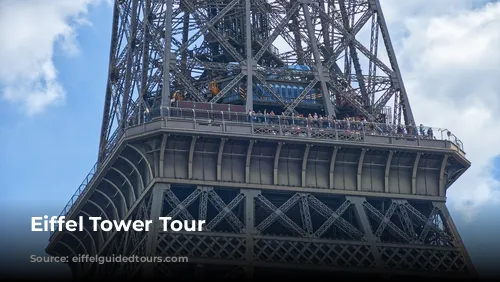
The Impact of the Makeover: A Timeless Symbol
The Eiffel Tower’s makeover is a testament to its enduring legacy, a symbol of Parisian pride and architectural brilliance. This year, as the tower sheds its “Eiffel Tower brown” and embraces the “yellow brown” of its past, it reminds us of the beauty of change and the enduring power of heritage.
The repainting process, although visible to visitors in the form of scaffolding, won’t impede your enjoyment of the tower. The Eiffel Tower remains open as usual, offering visitors the chance to experience this iconic structure in all its glory. While the scaffolding might be visible in certain photos, there are countless other vantage points to capture the tower’s timeless elegance.
The Eiffel Tower’s journey through colors is a reminder that even the most enduring monuments evolve with the times, always retaining their timeless appeal. As the tower prepares for its 2024 Olympic spotlight, it stands as a beacon of change, heritage, and Parisian pride.
